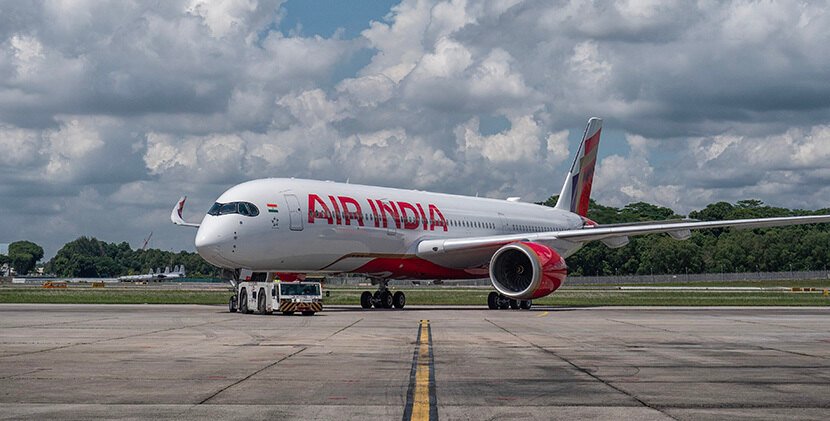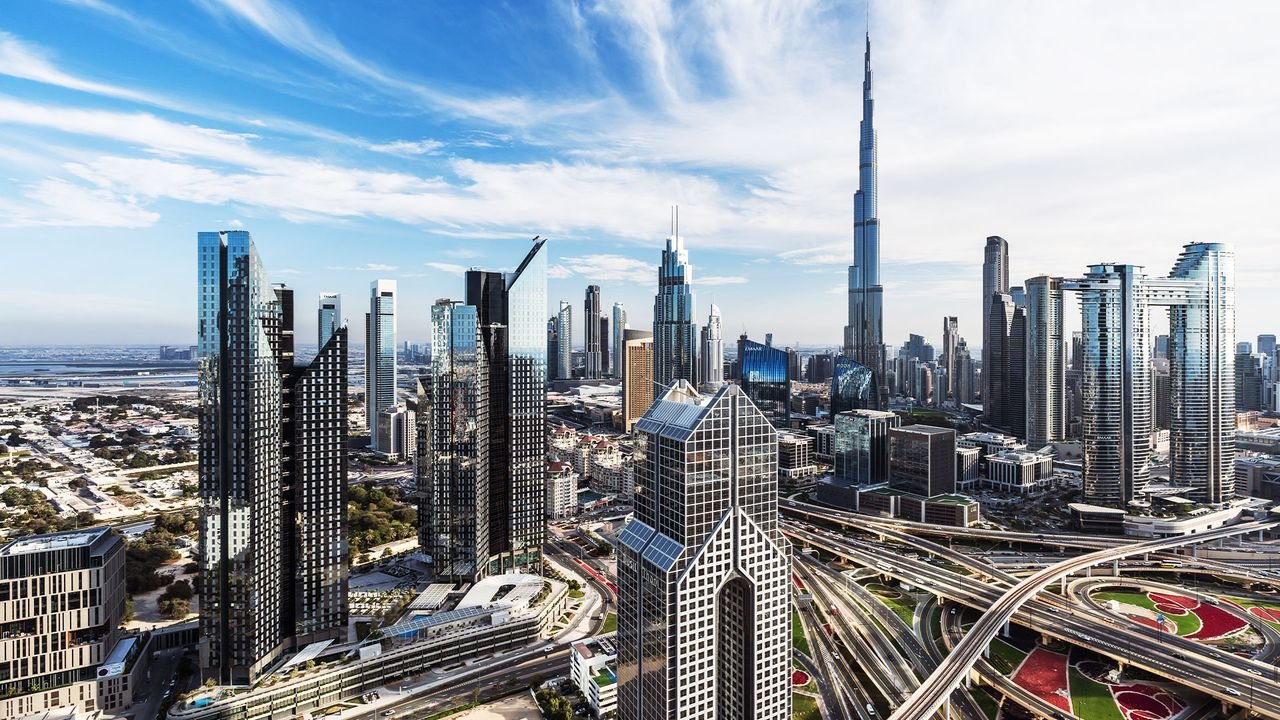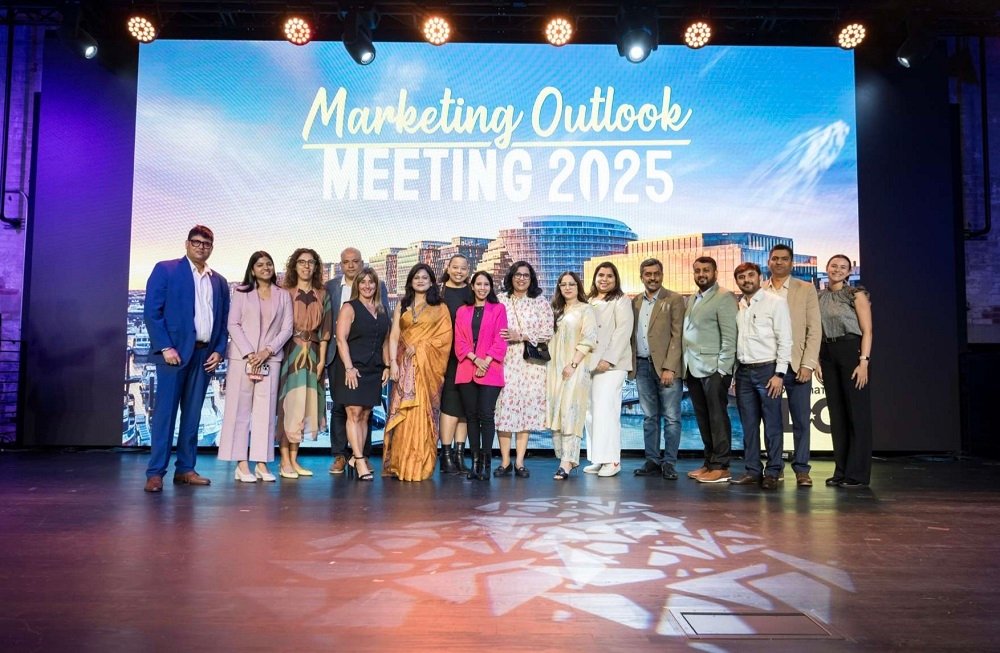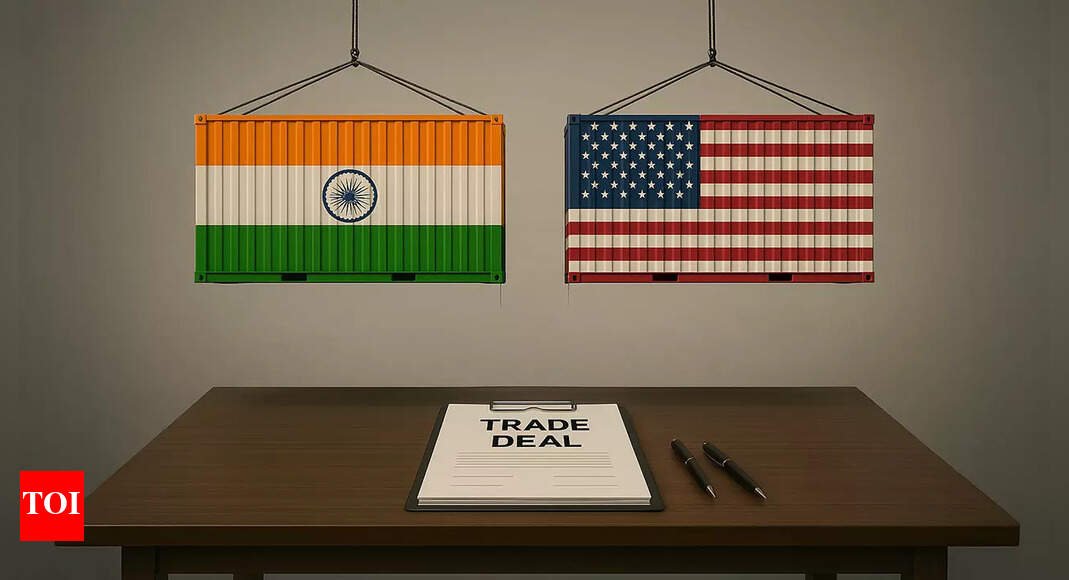Travel Guides & Articles
India Responds To DGCA Show Cause Notice After Air India Flight Time Violations And Regulatory Lapses On International Routes

Published on
August 14, 2025
India’s DGCA has issued a warning to Air India following breaches of flight time regulations on two long-haul flights earlier this year. The violations occurred when both flights from Bangalore to London exceeded the maximum allowable flight time, raising concerns about operational safety. The DGCA emphasized the need for strict adherence to aviation safety standards to ensure passenger well-being and prevent operational lapses, urging the airline to take immediate corrective actions.
The Directorate General of Civil Aviation (DGCA) recently warned Air India about potential violations of flight time regulations concerning two long-haul flights earlier this year. This warning underscores the regulator’s emphasis on the importance of adhering to aviation safety standards and maintaining a high level of care in airline operations, especially in long-distance travel. With Air India expanding its international operations, the DGCA has placed increased scrutiny on the airline’s ability to comply with these safety measures.
On May 16 and 17, 2025, Air India operated two flights between Bangalore and London (AI133). These flights exceeded the 10-hour flight time limit established by the Civil Aviation Requirement (CAR) Section 7, Series J, Part III, which regulates the maximum permissible flight time for pilots. Both flights surpassed the required time frame, which is intended to ensure pilot rest and passenger safety. The DGCA pointed out that such violations could potentially endanger the safety of passengers and flight crews.
Furthermore, the DGCA identified that Air India’s Accountable Manager did not meet the operational requirements set out in Annexure III of the CARs. This section of the regulations outlines the roles and responsibilities of airline management in maintaining safe operations, including proper oversight of flight operations and compliance with safety standards. The DGCA’s concern over this lapse highlights the importance of operational accountability at all levels within an airline.
In response to these regulatory breaches, the DGCA issued a Show Cause Notice to Air India on June 20 under the Enforcement Policy and Procedures Manual (EPPM). This document lays out the procedures for addressing non-compliance with aviation regulations. Following the review of Air India’s response to the notice, the DGCA determined that the airline’s explanation was unsatisfactory in addressing the regulatory lapses and shortcomings. The DGCA emphasized that the airline must adopt a more stringent approach to compliance, underscoring that the management of Air India must “exercise the utmost diligence and responsibility” to ensure full adherence to aviation laws and operational safety.
Air India responded by explaining that the violations were due to a “misinterpretation of a permission granted to alleviate airspace closures caused by border-related issues.” The airline asserted that the problem had been swiftly rectified once the correct interpretation of the permission was communicated to its operations team. In its official statement, Air India reiterated that it is fully aligned with all aviation regulations and that the issue was an isolated incident caused by an incorrect reading of the rules.
While this explanation clarifies the airline’s perspective on the matter, industry experts note that such warnings are not uncommon in the aviation industry. However, they serve as important reminders of the critical need for strict compliance with operational procedures. This is particularly significant for long-haul international flights, where pilot fatigue becomes a greater concern due to extended flight times. Fatigue can impair a pilot’s performance, increasing the risk of operational errors. Ensuring that flight times do not exceed regulatory limits is essential to preventing these risks and safeguarding passenger safety.
The DGCA’s warning also highlights the broader issue of safety management within the airline industry. Long-haul flights, especially those crossing multiple time zones, require careful planning and coordination to ensure that pilots are not overworked and that safety protocols are consistently followed. The DGCA’s decision to issue the Show Cause Notice reflects a broader trend in the aviation sector where regulators are increasingly focused on ensuring that airlines adhere to regulations that safeguard both passengers and crews.
With Air India continuing to expand its international network and increase its global presence, aviation regulators are likely to maintain close oversight of the airline’s operations. The DGCA will probably continue to scrutinize the airline’s compliance with flight safety standards to avoid any future lapses and ensure that passengers receive the highest level of safety during their journeys. As the airline industry grows and the demand for international travel rises, regulators will undoubtedly prioritize operational safety to avoid incidents that could jeopardize public trust in air travel.
As Air India moves forward, it is clear that the airline must take proactive steps to improve its internal processes and ensure that it meets all regulatory requirements without fail. The airline’s management must prioritize safety and compliance, especially as it expands its route network and handles an increasing volume of flights. By adhering strictly to aviation safety standards and regulations, Air India can maintain its reputation as a reliable and safe airline, fostering trust with passengers and regulatory bodies alike.
India’s DGCA has warned Air India after two long-haul flights exceeded the maximum allowable flight time, highlighting concerns over safety and emphasizing the need for strict regulatory compliance.
In conclusion, the DGCA’s warning to Air India serves as a crucial reminder of the importance of flight safety regulations, particularly in long-haul international operations. The airline industry must continue to prioritize operational oversight, especially regarding flight time limitations, to ensure that pilots are well-rested, fatigue is minimized, and passenger safety remains the top priority. As global travel continues to grow, so too must the commitment to maintaining high safety standards across the aviation industry.
Travel Guides & Articles
This was the most-searched international travel destination by Indians in the first half of 2025. Find out which

The travel and tourism industry, in India and worldwide, has experienced remarkable growth since the end of the pandemic. According to The Times of India, Indians spent a total of $31.7 billion on trips abroad in the 2024 fiscal year, representing a 25% increase compared to the previous year. Additionally, search data from travel platform Booking.com indicates that from January to June 2025, Indians have shown even greater interest in visiting this global hotspot. Scroll down to find out which.
This was the most-searched international travel destination by Indians in the first half of 2025. Find out which
According to Booking.com, Dubai ranked as the most-searched international travel destination by Indians between January and June 2025. Notably, Dubai attracted nearly 10 million visitors in the first half of 2025, with more than ten per cent of them coming from India.
Several factors contribute to the popularity of Dubai among Indian tourists. Flight tickets are affordable, the visa process is simple, and there are countless recreational options available. Visitors can enjoy shopping at luxury malls, marvel at breathtaking views from the top of the Burj Khalifa—the world’s tallest building, embark on a desert safari, experience the excitement of world-class theme parks, or simply relax by the beach.
The UAE’s no-income tax policy attracts many Indians seeking better work opportunities. According to data from the Indian Embassy in the UAE, as of 2024, around 4.3 million Indians reside in the UAE. Approximately 15% of them live in Abu Dhabi, while the rest are spread across the northern Emirates, including Dubai.
Additionally, the data revealed that Japan emerged as the most searched destination within Asia. Booking.com’s statistics from January to June 2025 indicated that Japan ranked among the top searches in 70 per cent of Asian markets, with Tokyo being the most searched city. Interestingly, Japanese travelers primarily searched within their own country, with Seoul as the only foreign city to make it into their top 10 list.
Travel Guides & Articles
Destination DC hosts first-ever reverse India Sales Mission in Washington, DC

Destination DC (DDC), the official destination marketing organization for the U.S. capital, successfully hosted 13 prominent Indian travel trade partners for its inaugural Reverse India Sales Mission, held in Washington, DC from August 23–28, 2025. Over six days, the visiting delegation engaged in curated programs fostering business development and cultural immersion.
17 local partners, including hotels, museums, restaurants, city tours and experiences, participated in one-on-one meetings and roundtable discussions with the trade. The agents also explored some of DC’s best offerings, including the tour of the iconic National Mall with Capitol Express Tours, Smithsonian museums, The People’s House: A White House Experience, and more. The group was in town just in time for the DC Jazz Festival and enjoyed a private jazz dinner with live music at the rooftop of the Kimpton Banneker Hotel.
The greatest highlight of this trip was the Destination DC’s Marketing Outlook Meeting held at Capital Turnaround, a unique meeting space inside Navy Yard’s historic streetcar barn. The DDC team announced the latest visitation data, industry updates and travel forecasts for 2026 in this annual meeting. The attendees enjoyed breakfast and networking with 500+ industry leaders and professionals, followed by a presentation by Destination DC’s President & CEO, Elliott L. Ferguson, II, Didio Pequeno, Director of Hospitality Market Analytics at CoStar Group; and Adam Sacks, President of Tourism Economics.
Reflecting on the success of the mission, Ferguson said, “It was a pleasure hosting the Indian travel trade in Washington, DC, where they were able to experience the District’s unique and diverse cultural and culinary offerings. The growth of visitation numbers from India has been exciting for us, and the market has been, and continues to be, a top focus globally.”
Participating members included a diverse mix of hotels, attractions, restaurants, and tourism partners such as AKA White House, Holiday Inn Washington Capitol – National Mall, Capitol Express Tours, International Spy Museum, Smithsonian’s National Air and Space Museum, Hillwood Estate Museum & Gardens, The People’s House: A White House Experience, Capital Turnaround, Kimpton Banneker Hotel by IHG, The Churchill Hotel Near Embassy Row, Comfort Inn Downtown DC/Convention Center, Pendry Washington DC – The Wharf, and Visit Loudoun County. Culinary and entertainment partners like Karizma Modern Indian, Bombay Street Food, Pappe, RASA Navy Yard, Fish & Fire Food Group, Thompson Hospitality, DC Jazz Fest, Bluemont Vineyard, and Washington Nationals also featured, alongside shopping and experience partners including Tanger Outlets National Harbor, USA Guided Tours, Black Hawk Sedans & Private Tours, and Virginia Beach Convention & Visitors Bureau
Travel Guides & Articles
India-US trade deal: India’s chief trade negotiator may travel to America next week; Modi-Trump call likely soon

Amidst signs of thaw in the India-US trade deal issues, government officials are likely to travel to America next week. The recent social media post exchanges between Prime Minister Narendra Modi and US President Donald Trump indicate an improvement in relations following a period of tension.Trade talks are set to resume next week, following a pause triggered by the US imposing additional 25% tariff on India regarding Russian oil purchases. Both leaders are also expected to hold a telephone discussion soon.According to an ET report, Rajesh Agarwal, the chief trade negotiator, will travel to Washington for continued discussions with American officials. A source familiar with the matter quoted in the report indicated the situation remains fluid, with uncertainty surrounding potential US tariff concessions in the coming months.
India-US ties: Signs of thaw
Modi and Trump have expressed mutual goodwill, with the PM responding to the US President’s friendly overture on Wednesday. Trump had earlier referred to the Prime Minister as a “dear friend” and indicated positive developments in the previously stalled trade discussions.“India and the US are close friends,” Modi wrote on X. “I am confident our trade negotiations will pave the way for unlocking the limitless potential of the India-US partnership. Our teams are working to conclude these discussions at the earliest.”
Special relationship
“I am also looking forward to speaking with President Trump. We will work together to secure a brighter, more prosperous future for both our people,” Modi said in response to Trump’s mention of the upcoming telephone conversation.On Wednesday morning, Trump posted on Truth Social stating that he was “pleased to announce India and the US are continuing negotiations to address the trade barriers between our two nations.”Also Read | India-US trade deal: Should India be enthralled by Donald Trump’s outreach to PM Modi?“I look forward to speaking with my very good friend, Prime Minister Modi, in the upcoming weeks,” the US President said. “I feel certain there will be no difficulty in coming to a successful conclusion for both of our great countries!”
Why has the US softened its stance on trade deal talks?
A source told ET that the informal meeting between Russian, Indian and Chinese leaders at the Shanghai Cooperation Organisation summit in Tianjin influenced this moderated stance from Trump. This gathering sparked discussions within pro-Trump circles regarding India-US relations.Notably, in the past ten days, Trump has refrained from claiming credit for the India-Pakistan ceasefire arrangement, an issue that previously caused friction with New Delhi.
Friction in ties remains
Reports indicate that Trump has requested European Union authorities to evaluate implementing up to 100% tariffs on Chinese goods, with suggestions to extend similar measures to India.Diplomatic friction has increased following the US implementation of a 25% duty on Indian imports, subsequently increased to 50% due to India’s continued Russian oil procurement.Also Read | Donald Trump wants EU to impose up to 100% tariffs on India, China – but it is unlikely to agree; here’s whyVarious Trump administration officials, including White House adviser Peter Navarro, who maintains scrutiny on India and BRICS, accuse that India’s oil purchases from Russia are supporting Moscow’s military operations in Ukraine.India has maintained its position on strategic independence, explaining that its Russian oil purchases are driven by domestic needs and global price stability considerations.Finance Minister Nirmala Sitharaman recently affirmed India’s continued Russian oil imports, emphasising that energy decisions follow national interests and economic reasoning rather than external pressure. She noted that the Reserve Bank of India is diversifying its US treasury holdings whilst purchasing gold.
-

 Business2 weeks ago
Business2 weeks agoThe Guardian view on Trump and the Fed: independence is no substitute for accountability | Editorial
-
Tools & Platforms1 month ago
Building Trust in Military AI Starts with Opening the Black Box – War on the Rocks
-

 Ethics & Policy2 months ago
Ethics & Policy2 months agoSDAIA Supports Saudi Arabia’s Leadership in Shaping Global AI Ethics, Policy, and Research – وكالة الأنباء السعودية
-

 Events & Conferences4 months ago
Events & Conferences4 months agoJourney to 1000 models: Scaling Instagram’s recommendation system
-

 Jobs & Careers2 months ago
Jobs & Careers2 months agoMumbai-based Perplexity Alternative Has 60k+ Users Without Funding
-

 Podcasts & Talks2 months ago
Podcasts & Talks2 months agoHappy 4th of July! 🎆 Made with Veo 3 in Gemini
-

 Education2 months ago
Education2 months agoMacron says UK and France have duty to tackle illegal migration ‘with humanity, solidarity and firmness’ – UK politics live | Politics
-

 Education2 months ago
Education2 months agoVEX Robotics launches AI-powered classroom robotics system
-

 Funding & Business2 months ago
Funding & Business2 months agoKayak and Expedia race to build AI travel agents that turn social posts into itineraries
-

 Podcasts & Talks2 months ago
Podcasts & Talks2 months agoOpenAI 🤝 @teamganassi





















